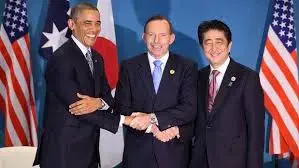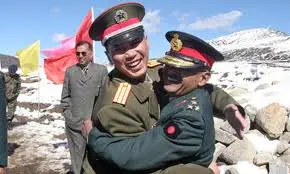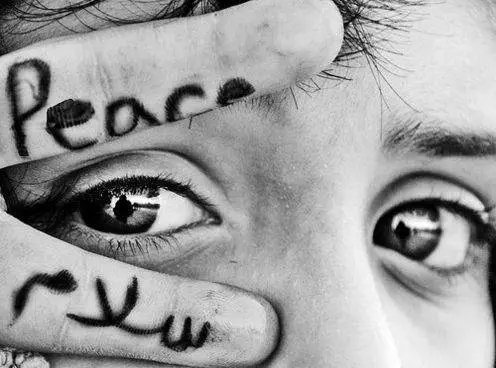Pradeep Kanthan
Operation Sindoor and the Sound of Silence
In the aftermath of Operation Sindoor, India’s latest counter-terrorism strike against cross-border provocation, one thing stood out louder than the missiles — the silence from the South Asian neighbourhood.
No statements of solidarity came from Nepal, Bangladesh, Bhutan, or Sri Lanka. Instead, condemnation arrived from the most unexpected corners: the Taliban and Israel. This stark absence of regional support wasn’t just a diplomatic oversight. It was a flashing red light — one signalling a deeper malaise at the heart of Indian foreign policy.
India’s diplomacy is not merely ineffective; it is philosophically confused.
The Contradiction at the Heart of India’s Global Image
Victimhood and Victory: A Diplomatic Incompatibility
India today projects two parallel images:
-
A fast-growing economic and technological power, sending spacecraft to the moon and outpacing GDP forecasts.
-
A civilisational victim under siege, rallying around a narrative of historical grievances and cultural suppression.
These two identities clash more often than they align. It is diplomatically incoherent to seek global leadership and sympathy in the same breath, especially when victimhood is narrowly cast through the lens of one faith.
Israel often faces similar contradictions, but it has something India lacks: allies. When Israel is attacked, Western capitals speak. Coalitions form. India, by contrast, often finds itself defending alone.
Exporting the Politics of Hindu Victimhood
Abroad, the politics of Hindu victimhood have been packaged as a cultural movement. Thought leaders like Rajiv Malhotra and organisations like the Hindu Swayamsevak Sangh (HSS) have framed Hindus as a discriminated diaspora deserving protection and recognition, often through the language of Diversity, Inclusion, and Equity (DIE).
This reframing aligns neatly with Western liberal ideals, allowing grievance to be dressed as a cultural celebration. Yet it also alienates — because it excludes India’s religious minorities from the national narrative. The ‘India’ exported through consulates and cultural events increasingly resembles a Hindu Rashtra, not a secular republic.
When the Rashtra Is Unspoken but Present
The Selective Performance of Secularism
At home, secularism is now a switch turned on only in times of peril. Otherwise, it’s left gathering dust in the constitutional archives.
CGI events abroad — from Yoga Days to Ayurveda Festivals — rarely reflect India’s pluralism. Instead, they promote a singular cultural identity under the guise of soft power.
This matters. Diplomacy is not just about negotiations. It’s about image, inclusion, and credibility. And when India frames itself narrowly, it invites narrow support.
Diplomacy at Its Nadir
Where Were Our Neighbours?
Operation Sindoor was a bold military move, but it was diplomatically barren.
Imagine the strategic value if Bangladesh sent a statement of support. If Nepal, Bhutan, or the Maldives had stood alongside India, even symbolically. Instead of being left to trumpet its success to itself.
Compare this with post-9/11 America. Despite being the world’s preeminent power, the U.S. immediately sought a ‘Coalition of the Willing’. It built a case, formed alliances, and isolated adversaries — even morally ambiguous ones.
India, meanwhile, fought back — but failed to build the optics of regional unity. Terrorism experts like Rohan Gunaratna were sidelined in the panel discussions on the Indian media. He had recommended and suggested that an alliance be formed.
Myths That Misguide: Colonial Legacies and Strategic Misbeliefs
Self-Sufficiency Is Not a Strategy
India’s belief that it can ‘go it alone’ is not a strength — it’s a colonial hangover.
During the British Raj, colonial administrators shaped myths of racial and civilisational superiority. The most notable was the Martial Races Theory, which favoured groups like the Punjabi Mussalman as inherently warlike. These constructs lingered post-independence, shaping Western attitudes and justifying preferential support for Pakistan.
India never dismantled these myths. It simply hoped to outgrow them.
Today, India clings to the idea that size and heritage are enough to command global influence. In geopolitics, relationships matter more than relics.
Between Hindu Nationalism and Global Leadership
What Image Does India Want the World to See?
India cannot continue to oscillate between being:
-
A rising economic power demanding a permanent seat at the UN Security Council, and
-
A civilisational entity nursing ancient wounds and rallying support from only one community.
This schizophrenia does not build trust. It does not earn allies.
If India wants to lead, it must present a consistent identity: one that is inclusive, secular, and globally coherent — not reactive, isolated, or selectively plural.
What Needs to Change
Build Coalitions, Not Echo Chambers
India’s path forward must focus on:
-
Reinvesting in neighbourhood diplomacy
-
Showing leadership through inclusion
-
Using military operations as springboards for diplomatic coalitions
-
Moving beyond the echo chambers of diaspora politics
Operation Sindoor could have been the foundation of a regional security pact. Instead, it was a tactical win, diplomatically underwhelming.
Conclusion: The Lonely Power
India’s greatness does not lie in isolation. It lies in its ability to lead coalitions, inspire trust, and match strength with humility.
If India does not build a diplomatic framework that matches its strategic ambitions, it will continue to fight alone — victories muted, allies absent, myths intact.
In the end, as the world chooses sides in the next great conflict, India will be remembered not for its power, but for its refusal to use it wisely.







